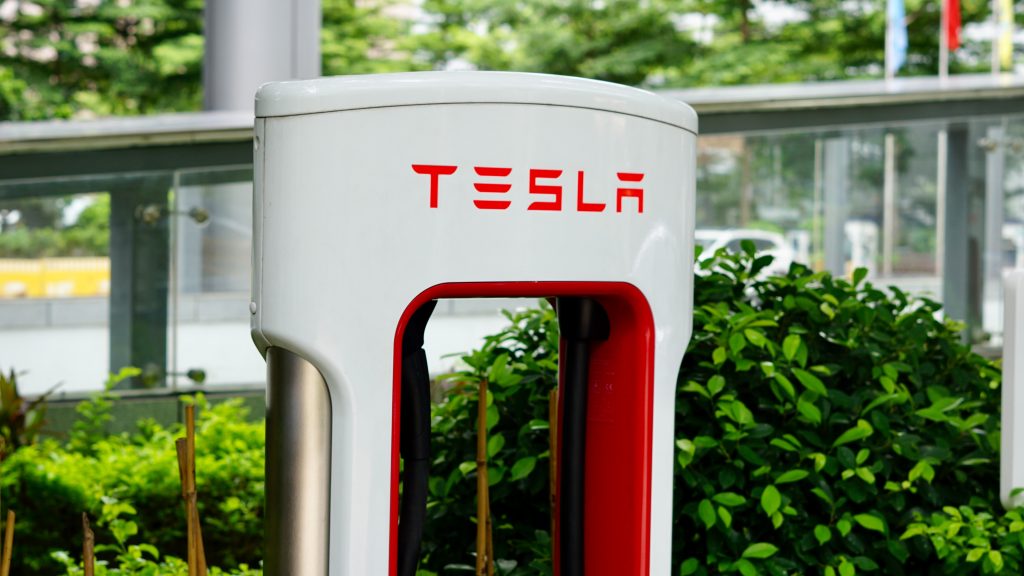By: Otaiba Ahsan

Electricity is an alternative fuel that costs much less on average than gas does in the world of cars. This is a huge selling point for many consumers who are switching to electric vehicles (EVs). But how much does it cost to charge a Tesla Model Y? The answer isn’t exactly linear, as there are multiple factors to consider. Continue reading for insights on the costs of charging your Tesla Model Y.
Calculating The Cost of Home Charging
Home charging is by far the most cost-effective option for Tesla owners on a per-charge basis. You can easily calculate your charging costs. Start by searching the electricity rates in your city, they typically bill you on a per kilowatt-hour (kWh) basis. There are different tiers based on the time of the day and year. For example, your municipalities pricing may look something like this.
Time of Use Price:
- Off-peak: 7.4 cents per kWh
- Mid-peak: 10.2 cents per kWh
- On-peak: 15.1 cents per kWh
Time of Use Hours:
- Off-peak: 7 pm – 7 am
- Mid-peak: 11 am – 5 pm
- On-peak: 7 am – 11 am and 5 pm – 7 pm
Therefore, in this example if you added 41 kWh overnight, during off-peak hours, then your charging cost is roughly $3.03. This was a simple multiplication of the rate, 7.4 cents with the number of kWh added, which came out to 303.4 cents, or $3.03 total. Each municipality has different rules for weekends and holidays. Where I live, we have off-peak pricing on holidays and every single weekend. It’s important to check the pricing in your area, as it will surely differ from this example.
TIP: Charge to between 80% and 90% daily to avoid faster battery degradation, and make sure to only charge during off-peak hours to maximize savings on your energy bill. Open the Tesla app, hit “Charge Stats” then “Settings” which will allow you to add energy costs at different times. Once you’re set up, you’ll be able to see exactly how much your charging costs, and more importantly, how much you’re saving!
While charging at home is much cheaper than filling gas, don’t forget the cost to set up home charging! Most Tesla owners who plug in at home typically use either the Tesla wall connector or a NEMA 14-50 “dryer” outlet with their Tesla mobile connector, which requires a Gen 2 NEMA adapter. The cost to install these varies depending on your area and how complicated the job is. For example, if your electrical breaker is on the main floor and close to the garage it should be a simpler task than if it’s in your basement. I’ve heard of installations ranging from as low as $250 all the way up to $1000+. Keep in mind, if you opt for the wall connector option, you’ll have to purchase the hardware and pay for installation. Whereas, if you go for the NEMA 14-50 outlet, you’ll only have to pay for an adapter plus installation.
TIP: Check your municipal, provincial and federal governing bodies for any rebates for home charging. Many places offer great options for getting home charging stations installed.
Tesla Supercharging
One of the largest advantages of Tesla ownership is having access to its vast network of superchargers. For a long time, these supercharging stations were exclusive to Tesla, but they’re now slowly being opened to other electric vehicles (EVs) as well. Superchargers are typically found directly off major highways and at other high-traffic areas like casinos, resorts, and more. This is the fastest way to charge your Tesla.
It’s difficult to pinpoint a single price for Tesla supercharging. This is because some stations bill you per kWh while others bill you per minute. Tesla claims that whenever possible, owners will be charged per kWh. According to LeafScore, the average supercharging cost per kWh in California is 0.25 cents. However, this number is subject to change as rates continuously vary. If you find yourself at a supercharger that bills you per minute, there are four tiers to account for changes in charging speeds.
TIP: Try not to charge past 80% at chargers where you’re billed per minute. This is because superchargers become much slower to safeguard battery health once the battery reaches this percentage. Also, once you get to the supercharger, try and snag a spot at a stall that doesn’t have another car charging at it, as you won’t have to share the energy source and you’ll get a faster charge.
Destination and Public Charging
These are third-party chargers located at places like hotels, restaurants, mall parking lots, and at other businesses. Some businesses are kind enough to offer free charging, while others will make you pay on a per kWh or per minute basis. Keep in mind if you’re using a DC fast charger at a public station, you will likely need a CCS Combo 1 Adapter.
TIP: A resource I’ve personally found extremely handy is the Plugshare app and website, which can provide you with locations on destination chargers in your area. In many cases, it provides images of the chargers, the cost per kWh, how reliable they are and more.
The Bottom Line
So how much does it cost to charge your Tesla Model Y? If you’re looking for ultimate convenience and the most cost-effective option per charge, then home charging is your best bet. A single charge can cost anywhere between $1 – $5 depending on how many kWh you add. Supercharging is also a great option and is extremely fast but can cost between $15 – $30 per charge on average depending on how much you’re adding.
